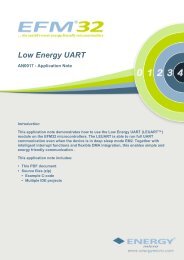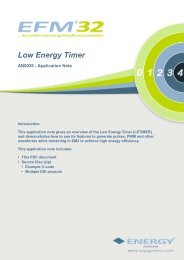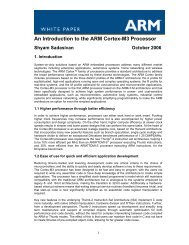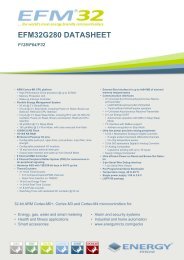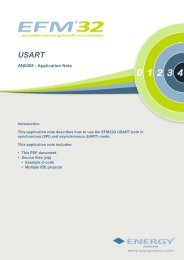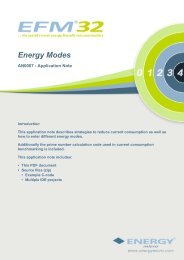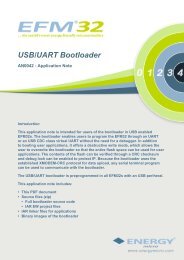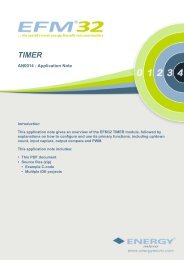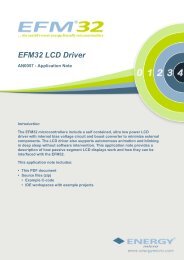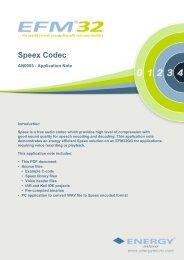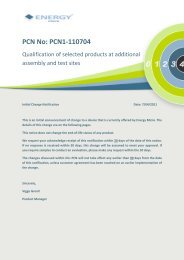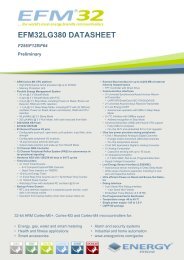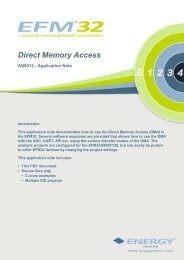EFM32 Debug and Trace - AN0043 - Application Note - Energy Micro
EFM32 Debug and Trace - AN0043 - Application Note - Energy Micro
EFM32 Debug and Trace - AN0043 - Application Note - Energy Micro
Create successful ePaper yourself
Turn your PDF publications into a flip-book with our unique Google optimized e-Paper software.
...the world's most energy friendly microcontrollers3.3 Software ToolsSoftware tools, typically in the form of an IDE (Integrated Development Environment) is needed to takefull advantage of the <strong>EFM32</strong>'s debug features. The following section describes how to set up a debugsessionwith one of our kits in combination with an IDE from either IAR or ARM (µVision IDE from Keil,from now on called referred to as Keil).3.3.1 Upload Code <strong>and</strong> <strong>Debug</strong> with Keil1. Make sure your kit is connected to the computer <strong>and</strong> correctly identified as a Segger J-Link device.Also make sure that the kit debug mode is configured correctly. You can use the <strong>Energy</strong> AwareComm<strong>and</strong>er to change debug mode <strong>and</strong> check if the J-Link can contact the target <strong>EFM32</strong> device.Figure 3.2 (p. 6) illustrates correct <strong>Energy</strong> Aware Comm<strong>and</strong>er output when the J-Link on thekit is working.Figure 3.2. eAcomm<strong>and</strong>er connected correctly to computer.2. In Keil, check that the project debug options <strong>and</strong> J-Link Target Driver options are configured correctly.See Figure 3.3 (p. 7) <strong>and</strong> Figure 3.4 (p. 7) .2013-05-08 - an0043_Rev1.02 6 www.energymicro.com



